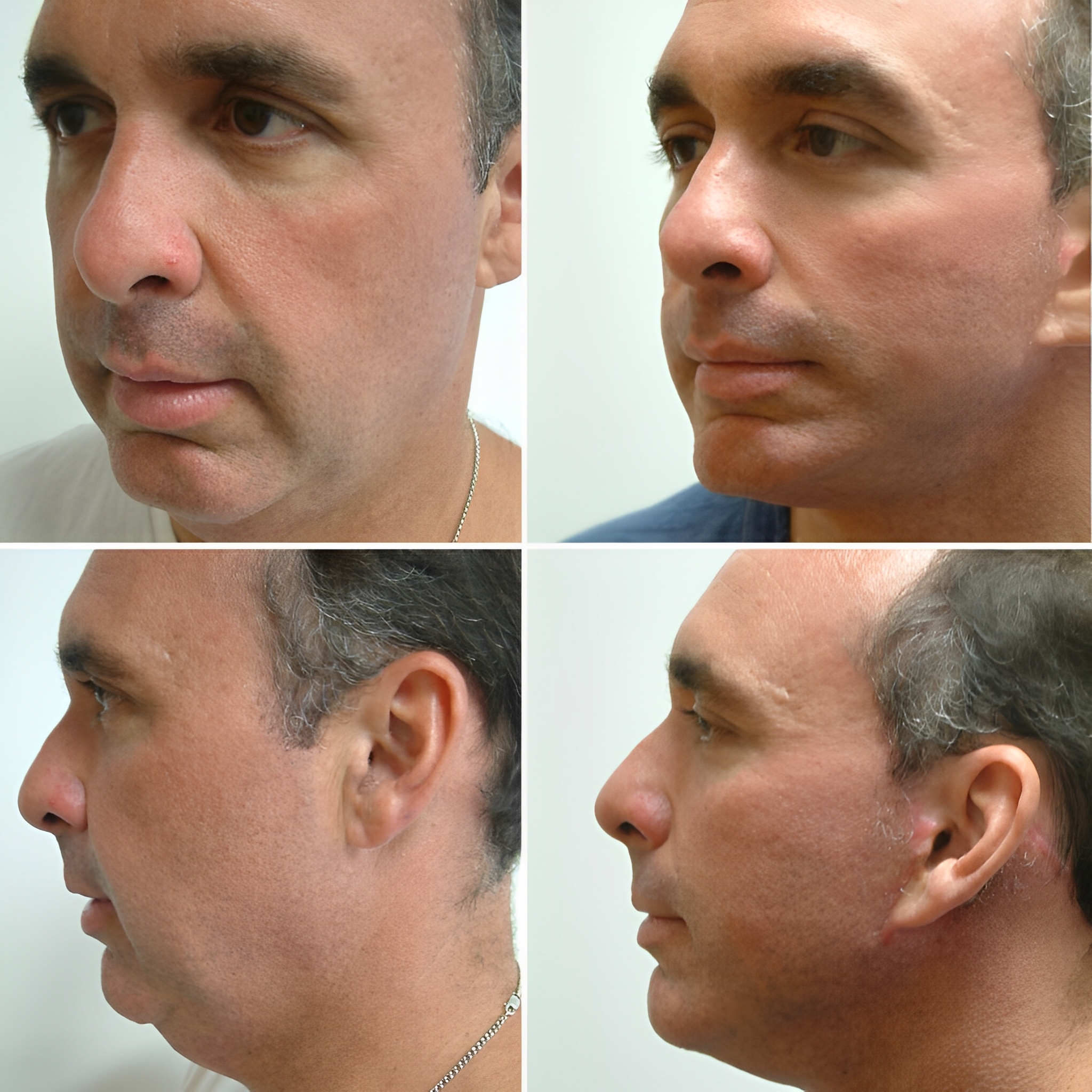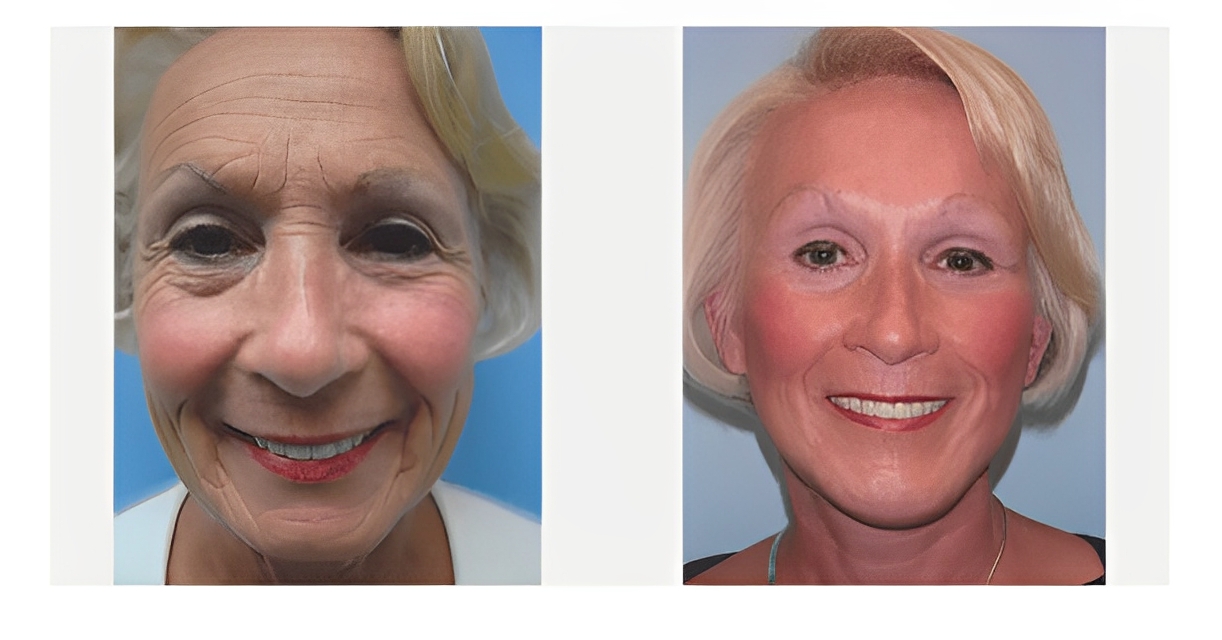Facelift in Cincinnati, OH
Facelift

What is a facelift?
Facelift surgery removes and tightens excess skin. It also smooths out wrinkles and folds, reduces the look of jowls and a double chin, and improves deep facial tissues. A significant benefit of facelift surgery is that it can address so many areas of the face in one procedure. The goal of a Rhytidectomy is to restore a more youthful and vibrant appearance. It does so by lifting and firming the face. Most facelift patients look seven to ten years younger after surgery.
Good candidates for a Rhytidectomy are a person who has experienced a loss of skin elasticity and muscle tone of the face and neck from aging, gravitational and environmental factors. Patients of any age who have lost a significant amount of weight with resulting deflation and sagging of facial and neck tissue and skin will also greatly benefit from the procedure. Younger individuals may desire intervention sooner rather than later, to maintain their youthful look and put off more aggressive procedures.
Benefits of Facelift
Facelift surgery offers numerous benefits to those looking to rejuvenate their facial features. It effectively reduces signs of aging, enhancing your appearance by:
- Tightening loose skin for a smoother, more youthful contour.
- Minimizing deep wrinkles and fine lines around the mouth, eyes, and forehead.
- Enhancing the jawline and neck profile, reducing the appearance of “jowls.”
- Improving skin tone and texture due to the removal of excess skin.
- Making you look an average of 12 years younger (results can vary)
Ideal Candidates for a Facelift
You may be a good candidate for a facelift if you:
- Are healthy and at a stable weight.
- Have realistic expectations about the outcomes of the surgery.
- Exhibit signs of facial aging but still have some skin elasticity.
- Are you a non-smoker or willing to quit smoking before the procedure and throughout recovery?
Types of Facelift
Traditional Facelift
The traditional facelift, also known as a complete facelift, provides comprehensive rejuvenation of the face and neck. It targets moderate to severe facial wrinkles, sagging skin, and excess fat. The procedure involves incisions that start in the hairline at the temples, continue around the ear, and end in the lower scalp. Dr. Sillins can access deeper tissues through these incisions for more significant lifting and repositioning. The traditional facelift is ideal for patients with considerable signs of aging who seek dramatic and long-lasting improvements.
Mini Facelift
A mini facelift is less invasive than a traditional one and is suited for patients with mild to moderate signs of aging, primarily in the mid-face area. This technique involves shorter incisions, usually along the hairline above each ear and in the natural creases surrounding the ear. Dr. Sillins tightens deep facial tissues through these incisions, removes excess skin, and repositions the remaining skin for a refreshed appearance. The recovery time is generally shorter than a traditional facelift, making it a popular choice for younger patients or those seeking less extensive corrections.
SMAS Technique
The Superficial Musculoaponeurotic System (SMAS) facelift targets the layer of tissue, or fascia, that covers, surrounds and attaches to the deeper structures of the face and neck. The SMAS layer is surgically lifted and tightened to achieve youthful contour. This technique can lift the cheeks, reduce jowls, and enhance the jawline. It’s particularly effective for correcting mid-face sagging and offers natural and long-lasting results.
Deep Plane Lift
The deep plane lift is a more advanced technique that goes beneath the SMAS layer, repositioning the whole facial musculature. This not only lifts the skin but also the deeper muscle layers, providing a comprehensive rejuvenation that addresses severe facial sagging and deep structural aging. The incisions are similar to those used in a traditional facelift, but the work on the facial tissues is more extensive. This method is noted for delivering natural-looking results and improvements in the nasolabial folds, the lines that run from the sides of the nose to the corners of the mouth. It is ideal for patients with significant facial aging who require more intensive corrections.
RHYTIDECTOMY surgery risks
As with any surgery, there are risks involved. Possible risks include nerve damage and delayed wound healing. Smokers are required to refrain from smoking before and after the procedure to reduce the likelihood of complications
What is Facelift Surgery Recovery Like?
RHYTIDECTOMY Recovery Process
You will receive detailed instructions about your post-surgical care. Recovery time will vary depending on the extent of your surgery and the addition of complementary procedures. Most patients experience some discomfort, but medication can relieve tenderness. Bruising and swelling will be at their worst after 2 days, and they can persist for a few days. Recovery normally takes around 2 weeks, and vigorous activity can resume after 4 weeks.
Schedule Your Consultation with Dr. Sillins
Dr. Deborah Sillins is a board-certified plastic surgeon who earned recognition as “The Plastic Surgeon of Choice” in the Cincinnati/Northern Kentucky region for her transformative approach to cosmetic procedures. To schedule an appointment with Dr. Sillins to determine if a facelift may suit your cosmetic goals, please call (859) 429-3333 today.

